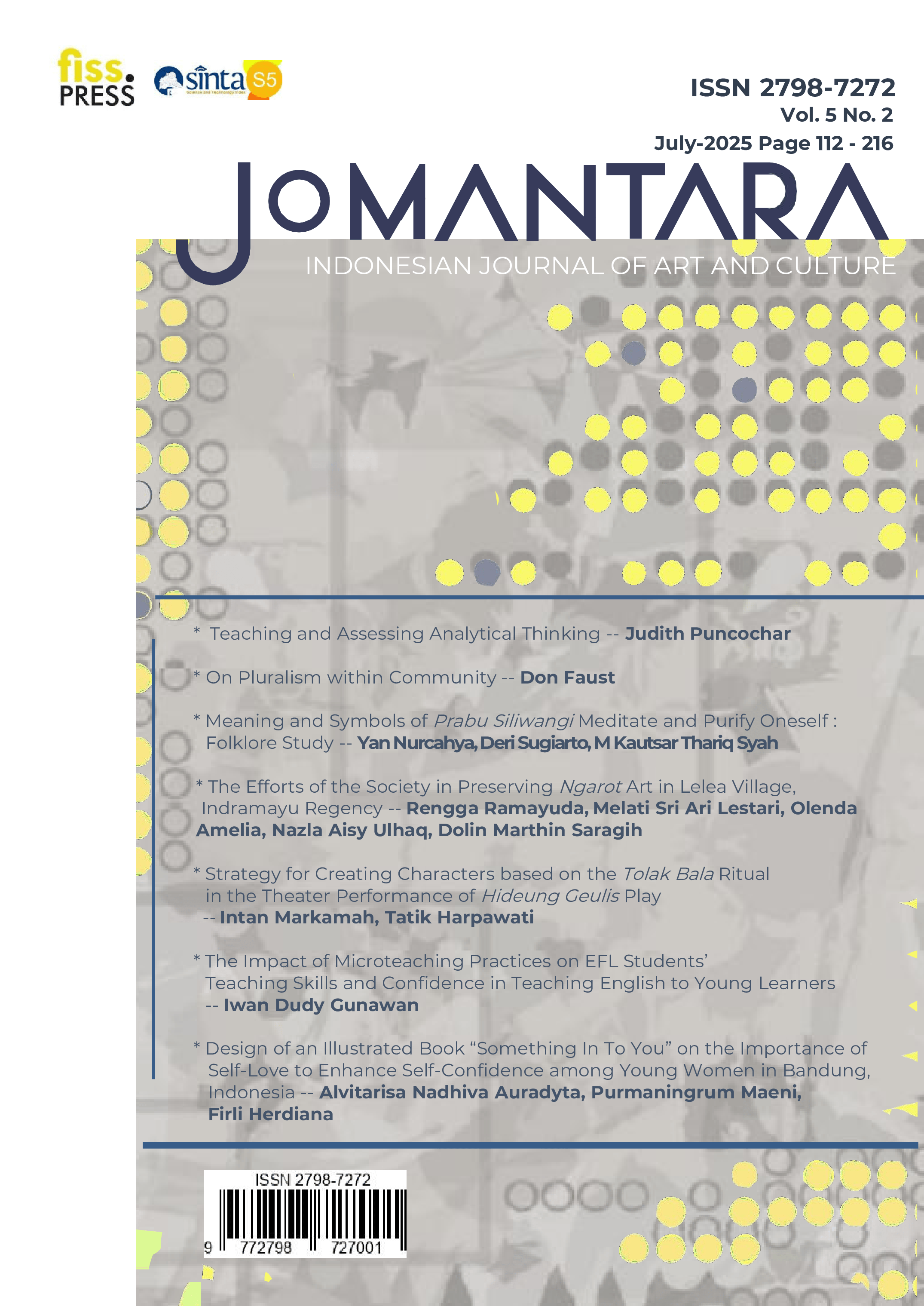Teaching and Assessing Analytical Thinking
DOI:
https://doi.org/10.23969/jijac.v5i2.31148Abstract
The focus of this paper is on the pivotal role of analytical thinking in student education, irrespective of the curriculum. Teaching analytical thinking is a vital instructional skill and a foundation of student learning. Instructors should be well-versed in teaching analytical thinking, as it forms the bedrock of critical thinking and problem-solving. Despite not being explicitly listed as one of the seven high-impact teaching practices in undergraduate education by Chickering & Gamson (1987), critical thinking and analytical thinking are frequently cited as Student Learning Outcomes in academic courses and programs in the United States (Grandinetti & Puncochar, 2019; Peñaloza & Puncochar, 2019; Puncochar, Barch, Albrecht, & Klett, 2018). University instructors often claim that they incorporate critical thinking into their teaching to improve student learning outcomes (Janssen et al., 2019).
In 2014, Oceans of Data outlined the specific skills and knowledge required to compete in a big-data-centered economy. Analytical thinking ranked highest in both knowledge AND skills. The results were validated by nearly 100 data analyst peers (see Krumhansl, 2016). Although analytical thinking ranked higher than critical thinking in both knowledge and skills, this paper posits that analytical thinking is a necessary precursor to critical thinking and problem-solving.
Downloads
References
Alwasilah, A. C. (2014). Islam, culture, and education: Essays on contemporary Indonesia. Bandung, Indonesia: PT Remaja Rosdakarya.
Anderson, L. W., & Krathwohl, D. R. (2001). A taxonomy for learning, teaching, and assessing: A revision of Bloom's Taxonomy of Educational Objectives. Allyn & Bacon. Boston, MA (Pearson Education Group).
Azid, N., Maksin, M., Mohktar, A., & Hashim, R. (2015). Effectiveness of learning activities using interactive modules successful intelligence. Australian Journal of Basic and Applied Sciences, 9(32), 1-9. Retrieved from www.ajbasweb.com
Bloom, B. S., Engelhart, M. D., Furst, E. J., Hill, W. H., & Krathwohl, D. R. (1956). Taxonomy of educational objectives: The classification of educational goals: Handbook I: Cognitive Domain. New York: Longmans, Green and Co.
Brown, N., Afflerbach, P., & Croninger, R. (2014). Assessment of critical-analytic thinking. Educational Psychology Review, 26(4), 543-560. Retrieved from http://www.jstor.org.nmu.idm.oclc.org/stable/43548442
Chickering, A. W., & Gamson, Z. F. (1987). Seven principles for good practice in undergraduate education. AAHE Bulletin, 39(7), 3-7. Johnson, A. P. (2000). Up and out: Using creative and critical thinking skills to enhance learning. Boston: Allyn and Bacon.
Faust, D. (1989). What is mathematics? Another example: computer science. International Journal of Mathematics Education in Science and Technology 20(2), 307-315. https://www.tandfonline.com/doi/abs/10.1080/0020739890200211
Grandinetti, F. C., & Puncochar, J. (April 9-12, 2019). Engaging our Institutions in Student Learning Assessment. Higher Learning Commission 2019 Annual Conference: Roadmaps for Student Success. Chicago, IL.
Janssen, E. M., Meulendijks, W., Mainhard, T., Verkoeijen, P. J. L., Heijltjes, A. E. G., van Peppen, L. M., & van Gog, T. (2019). Identifying characteristics associated with higher education teachers’ Cognitive Reflection Test performance and their attitudes towards teaching critical thinking. Teaching and Teacher Education, 84, 139-149. Retrieved from https://doi.org/10.1016/j.tate.2019.05.008
Johnson, B. (2017). Teaching students to dig deeper, 2nd edition. Routledge, New York: New York. http://dx.doi.org/10.4324/9781315165653
Krumhansl, C. (2016). Analytical thinking in the workplace and the classroom. Retrieved from http://oceansofdata.org/analytical-thinking-workplace-and-classroom
Peñaloza, F., & Puncochar, J. (April 9-12, 2019). Assessment Planning – Special Interest Group. Higher Learning Commission 2019 Annual Conference: Roadmaps for Student Success
Puncochar, J. (2025). Enhancing student engagement and writing in language education. Indonesian Journal of Art and Culture 1(5). https://journal.unpas.ac.id/index.php/jomantara/article/view/22324/10537
Puncochar, J., Barch, J., Albrecht, B., & Klett, M. (October 19, 2018). Outcomes assessment of co-curricular and student support services. Lilly 2018 Conference on College & University Teaching, Traverse City, MI.
Rowe, M. B. (1974). Wait time: Slowing down may be a way of speeding up. American Educator, 11, 38-43, 47. Retrieved from http://dx.doi.org/10.1177/002248718603700110
Rowe, M. B. (1978). Wait, wait, wait.... School Science and Math, 78, 207–216. Retrieved from http://dx.doi.org/10.1111/j.1949-8594.1978.tb09348.x
Downloads
Published
Issue
Section
License
Copyright (c) 2025 Publisher Universitas Pasundan

This work is licensed under a Creative Commons Attribution-NonCommercial 4.0 International License.
Copyright Notice

This work is licensed under a Creative Commons Attribution 4.0 International License.









